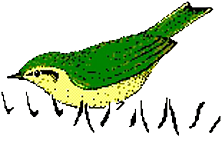Avisoft-SASLab Pro, version 5.0 (24 May 2010)
- An additional classification option ‘Frequency Contour Templates’ (with options for normalized durations and time warping) allows to classify whistle-like vocalizations in a more general way.
- A section label option on the Pulse Train Analysis tool (‘Group Analysis’ > ‘use section labels as groups’) allows to count pulses that occur within labeled sections.
- New Automatic Parameter Measurements option ‘Harmonic-to-noise ratio’ implemented.
- The new option ‘relative stddev of entire element’ in the Automatic Parameter Measurements allows to quantify for instance frequency or amplitude modulation.
- The newly implemented ‘time derivative’ parameters in the Automatic Parameter Measurements tool that are available through the ‘more…’ button can help to quantify frequency changes within whistle-like calls.
- The CORRELATOR module (version 3.0) can now also process one-dimensional data such as waveforms, envelopes and spectra.
- The newly implemented LANC and SMPTE timecode decoding options (Analyze/Time axis format…) allow to synchronize video with (ultra)sound recordings more easily. In addition to that, timecode information can also be extracted from the “bext” metadata chunk of the .wav file header.
- New new command File/Rename allows renaming existing sound files, which can be supported by user-defined text modules. These text modudles can also be accessed from the labeling dialog box. An unlimited number of additional text modules can be imported from a text file (menu ‘File’/’Rename by text module/Define text module’/’External text file’).
- The command ‘Tools’/’Labels’/’Georeference labels…’ and it’s batch version can now also take filename prefixes (that are separated by space characters) as species references, which can for instance support documenting bat field surveys. If the species labels / filename prefixes match the text modules defined from ‘File’/’Rename by text module / Define text module’, then the created .kml file will contain species-specific icons. See also the Avisoft Bat Survey sample.
- The batch classification commands now allow to add the detected class names to the original .wav file names, which can improve the file handling, certainly for processing field survey data that are further processed by the above ‘Georeference labels’ command.
The new command ‘File’/’Specials’/’Edit BWF (bext chunk) Metadata…’ allows to view and edit metadata according to the Broadcast Wave Format standard.
- The command ‘File’/’Specials’/’Georeference .wav files…’ has been further improved and now allows to save the GPS coordinates directly into the BWF .wav file header as metadata. A log file output can assist troubleshooting time stamp deviations. See also the Bird Species Map sample.
